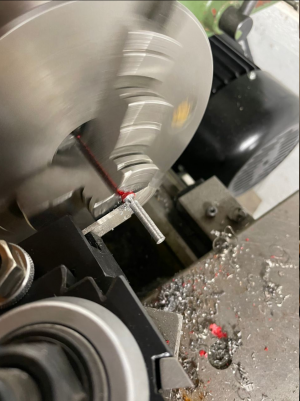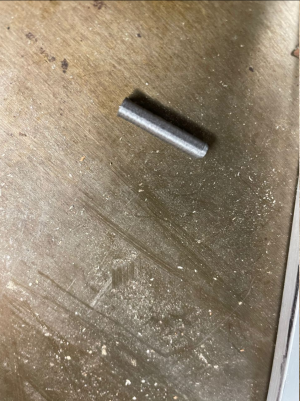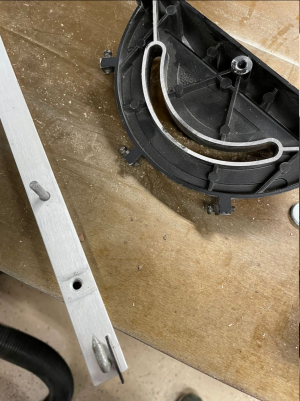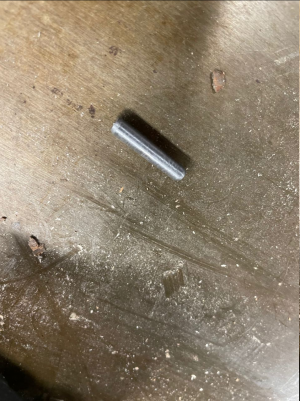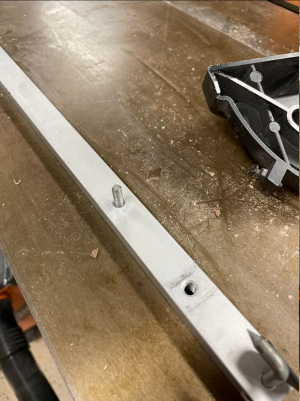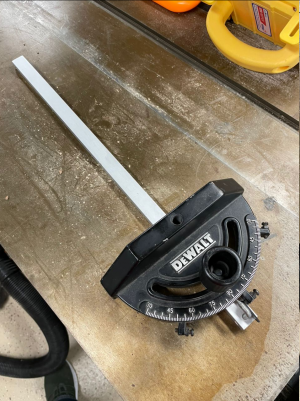- Joined
- Jun 21, 2020
- Messages
- 26
An overdue update for everyone. In good news, the lathe and mechanics are now all running more or less. There's a few minor things to resolve before it can be run for long periods.
First up is the pulley on the lathe. Very tight fit and had to mallet it on to the shaft. Already tested out the low RPMs and measured very close to expected. I also had to make a modification to the motor capacitor cover to fit in the motor mount. Of course they didn't provide dimensions for this motor and it didn't fit.
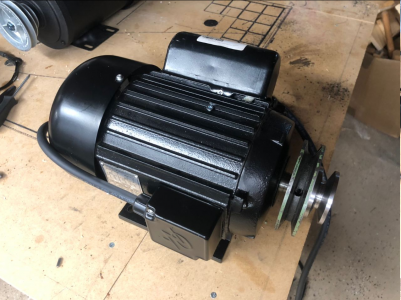
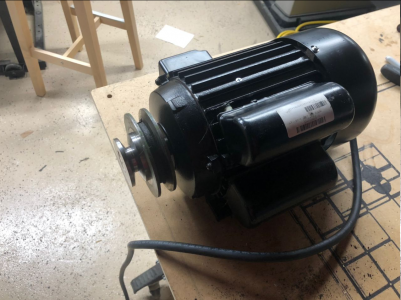
I ordered an additional length of belt to have a different length for the other pulley combination. Figured that was the easiest way to get me the speeds easily.
The back gear is in, and the first part on the lathe is the spacer I needed for the backgear I bought. This gear was for a Jet lathe and has the right teeth profile, but the size and spacing is just a little bit off. You can see the gap in the first photo where the gear would shift.
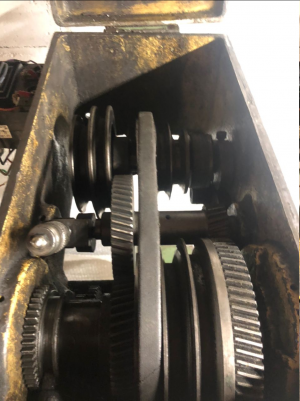
Here's the spacer in place.
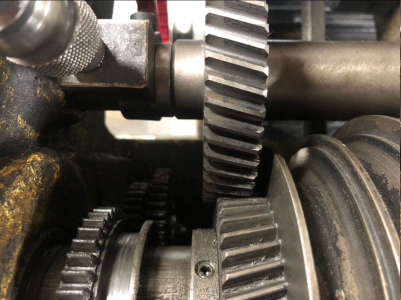
You can also see the sacrifice I've had to make in teeth engagement. It makes me pretty worried but I think it will work as expected.
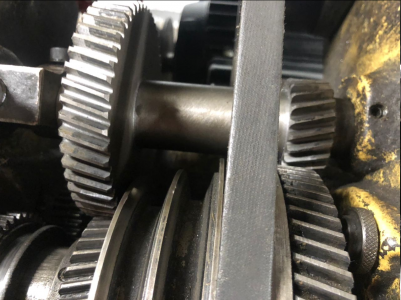
Hard to tell, but it's biased such that more of the small gear makes contact.
I'm trying to decide if I red grease the back gear teeth or just some white lithium spray.
The next thing I'm tackling is ball oilers and grease fittings. The back gear was missing a zerk fitting, As you can seen in my other picture they had just thrown a set screw in when they ruined the last back gear. I ordered a few ball oilers from McMaster and 10 from Grizzly since they were so much cheaper.
The wiring was a bit annoying to figure out, but it's running and in a good state. I should have checked more closely on the contactor I had, who knew a solenoid running at 4x the power wouldn't last very long?
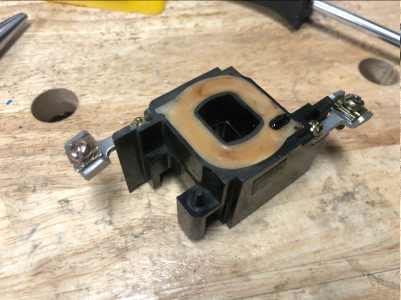
No big loss as that contactor was already a bit questionable, and upgrading to some automation direct ones was only ~$23/ea. Now I have a contactor set actually rated for 240v.
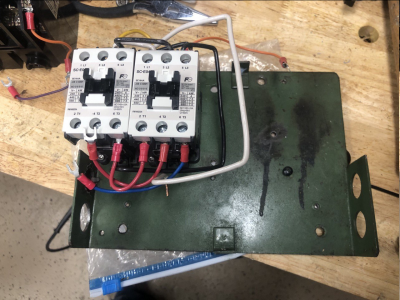 I think only other thing to do on the wiring is replace the light with a working one that runs off the right voltage. I'm tempted to add an estop button but I think that will have to wait for a new electrical cabinet.
I think only other thing to do on the wiring is replace the light with a working one that runs off the right voltage. I'm tempted to add an estop button but I think that will have to wait for a new electrical cabinet.
I'm pretty excited it's all running. The gearbox sounds very metal on metal so I'm avoiding running that until I can do a teardown and rebuild of it. The other big thing is that the whole thing shakes quite a bit. There's not much weight in the base and I think that's most of it, but I'm thinking I should also look into some ground supports or something
I set up my collet draw bar for cleaning and got it nice and polished up:
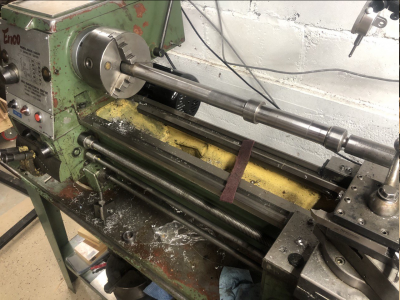
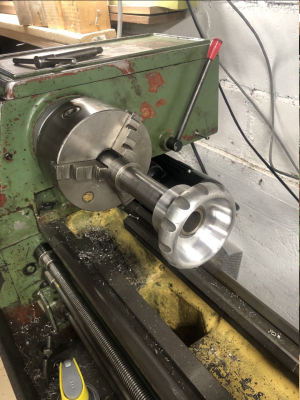
I could use some advice on how to use the draw bar items in the front of the face plate.
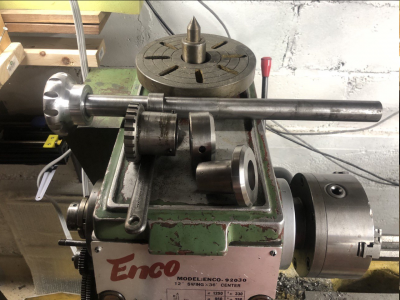
Thanks for checking in.
First up is the pulley on the lathe. Very tight fit and had to mallet it on to the shaft. Already tested out the low RPMs and measured very close to expected. I also had to make a modification to the motor capacitor cover to fit in the motor mount. Of course they didn't provide dimensions for this motor and it didn't fit.


I ordered an additional length of belt to have a different length for the other pulley combination. Figured that was the easiest way to get me the speeds easily.
The back gear is in, and the first part on the lathe is the spacer I needed for the backgear I bought. This gear was for a Jet lathe and has the right teeth profile, but the size and spacing is just a little bit off. You can see the gap in the first photo where the gear would shift.

Here's the spacer in place.

You can also see the sacrifice I've had to make in teeth engagement. It makes me pretty worried but I think it will work as expected.

Hard to tell, but it's biased such that more of the small gear makes contact.
I'm trying to decide if I red grease the back gear teeth or just some white lithium spray.
The next thing I'm tackling is ball oilers and grease fittings. The back gear was missing a zerk fitting, As you can seen in my other picture they had just thrown a set screw in when they ruined the last back gear. I ordered a few ball oilers from McMaster and 10 from Grizzly since they were so much cheaper.
The wiring was a bit annoying to figure out, but it's running and in a good state. I should have checked more closely on the contactor I had, who knew a solenoid running at 4x the power wouldn't last very long?

No big loss as that contactor was already a bit questionable, and upgrading to some automation direct ones was only ~$23/ea. Now I have a contactor set actually rated for 240v.
 I think only other thing to do on the wiring is replace the light with a working one that runs off the right voltage. I'm tempted to add an estop button but I think that will have to wait for a new electrical cabinet.
I think only other thing to do on the wiring is replace the light with a working one that runs off the right voltage. I'm tempted to add an estop button but I think that will have to wait for a new electrical cabinet.I'm pretty excited it's all running. The gearbox sounds very metal on metal so I'm avoiding running that until I can do a teardown and rebuild of it. The other big thing is that the whole thing shakes quite a bit. There's not much weight in the base and I think that's most of it, but I'm thinking I should also look into some ground supports or something
I set up my collet draw bar for cleaning and got it nice and polished up:


I could use some advice on how to use the draw bar items in the front of the face plate.

Thanks for checking in.


